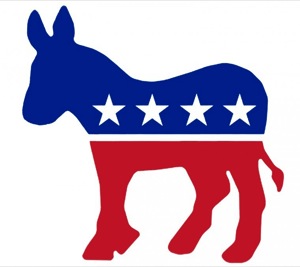
After Americans re-elected President George W. Bush and gave Republicans majorities in both houses of Congress in 2004, Karl Rove spoke of a durable Republican majority. It endured until 2006. The election of President Obama, which was touted as the first triumph of the changing demographics that would keep Democrats in power. That lasted until the 2010 Tea Party revolution, which was spun right back around by last week’s re-election of President Obama.
So is 2012 the beginning of a Democratic dynasty? Maybe.
Economic cycles, powerful personalities, and the American desire for change make presidential dynasties difficult. Bush 41 couldn’t pull out of a recession fast enough to defeat then Gov. Bill Clinton, whose 2012 convention speech reminded us just how gifted he is. The surging economy President Clinton handed Vice President Al Gore wasn’t enough to win a third Democratic term, at least in the Electoral College. Sen. John McCain never had a chance with the economic tail spin he inherited.
The last time a party had more than three consecutive terms in the White House was 1932-1952, when Harry Truman won a fifth term after finishing FDR’s fourth. That dynasty combined FDR’s powerful persona with the end of The Great Depression and the conclusion of World War II.
Remove FDR, Depression and World War II from the last sentence. Insert Obama, recession, and wars in Iraq and Afghanistan, and it becomes clear why there is a real chance that Democrats could dominate presidential elections.
If it were a sports season, 2012 may have been the trap game, where decreased enthusiasm and effort could have led to a loss. Having survived the close one, things get easier. President Obama and Democrats will likely get credit for the improving economy that experts predicted regardless of the 2012 victor.
Further, the depth of the financial crisis could delay the next cyclic recession, which some experts say would already have come were we not still digging out of the last one.
Demographics will help Democrats even more than the economy. The portion of the electorate made up of non-white voters has increased by 1-2 percentage points every four years and has trended heavily Democratic. Unless Republicans can attract these voters, presidential elections will be incrementally easier for Democrats.
Conservatives who think they can coopt the “change” mantra, as Romney tried at the end, or who think turning out the diverse electorate is Obama-dependent should look at the potential candidates. Secretary of State Clinton is so beloved and competent she could conceivable avoid a primary, something not even Bush 41 (vs. Dole and Robertson) or Gore (vs. Bradley) managed when running for their party’s third term.
As the first woman to lead a major party ticket, neither the change mantle nor turnout would likely be a problem. In 2020, Clinton could run for re-election with the advantages of incumbency and another demographic boost. Those same demographics could have future Texas Gov. Julian Castro ready to run in 2024, keeping the excitement alive.
Can Democrats really hold the White House for 32 years? Probably not. Clinton could decide not to run. Jeb Bush could help Latino outreach. Benghazi could become a legacy ruining scandal. But the economic and demographic fundamentals make it a reasonable conversation, and it becomes a little more likely with every fact denying conservative pundit who believes the problem was Moderate Mitt.











